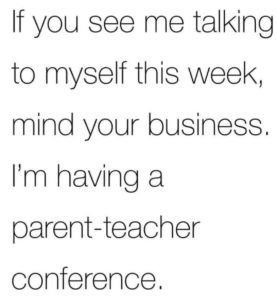There have been a lot of memes about homeschooling circulating since most schools closed for the year due to the COVID-19 pandemic. Here are a few of my favorites.



Why start off an educational blog post with memes? Well, to be frank we all need a good laugh during these hard and uncertain times. After all, laughter is the best medicine. During the last few weeks, my inboxes have been full of requests for help, not from educators but from friends and family coping with having to help educate their children from home. I totally understand them. I am also a mom working from home while helping four little ones ranging from first to sixth grade distance learn. It is not easy and I hold a Master’s degree in Education! So after three weeks of distance learning, here are some things you might want to consider to support not only your students but also their families during this time.
Communication is key!
We know this from the classroom, but since familiues are taking a more active role in the learning process now it’s even more crucial. Consider at minimum a weekly correspondence that outlines what is going to happen or what has occurred during the week along with any important deadlines and how families can partner with you. Another thing you might want to consider is sending a second email or making a phone call just to check in and see if there is any support families might need. I know that this can be challenging when working with families of English learners but apps like TalkingPoints can help with the translation. If you are still at the beginning stages of distance learning or notice that a particular student is not engaged, consider setting up a call with the families to explain distance learning format, answer questions, and help set up their student for success. Just be mindful not to “over communicate” by sending too many messages. It can really overwhelm families to see their inboxes inundated with messages, especially if they have multiple students in one household.
Families are as diverse as students
Please keep in mind that during these times of self-isolation and distance learning, families might be in very different work situations. For example, some of your students’ parents might be essential workers working overtime to help our communities overcome the pandemic. Their ability to support students will be limited at best. Some medical personnel have even sent their children away to be with other relatives to protect them from probable infection so make sure that communications are sent via a platform that can be forwarded to someone else. Others might be working from home and learning how to navigate the new work situation. Still others may be using the bulk of their time to search for a new job due to the many unfortunate layoffs. I bring all of this to mind to say that when planning virtual meetings consider offering more than one time slot to help ensure that students can make it. Also try to work with other teachers at your site or district to avoid having multiple virtual meetings at the same time as some households have multiple students with access to only one device.
This brings me to technology. Keep in mind that not everyone has one-to-one devices at home. Many might be sharing one device so try to keep that in mind when scheduling meetings or assigning work. My local district instituted a one device checkout per family policy which could be tricky with more than one student at home. Another technology consideration is that families are not all tech savvy. Consider making tutorials (with translation when possible) of how to access, engage with virtual work, as well as how to turn it in. This will bring down a lot of anxiety.
Finally, not all families feel equipped to help their students, whether a language barrier or just not remembering the material you are covering. Please consider hosting office hours when students can log-on and meet virtually or over the phone for help.
Workload
Although students are distance learning, we do not need to fill up a whole seven-hour school day with work! One student on their own can complete a “school day” worth of work in less time. Help families and students manage their time better by creating a “Week-at-a-Glance” document that holds all the work students are supposed to do for the entire week with embedded hyperlinks when appropriate. This will help the families that have multiple children and adults sharing one device better use their time.
Let families know of virtual meetings well in advance as well to ensure they can make it or offer a recording of the meeting when possible to have students watch if they can’t make it or playback for more practice. If you record with Zoom, there is a feature that transcribes the recording into multiple languages. This would be a great tool to use with English learners!
When creating the lessons, try to design them in a way that takes little to no parental support. This will help families that feel unprepared while still allowing those that want to be more active to contribute.
Include Fun!
Self-isolation is tough for families and students. Consider a weekly optional activity that students can do for fun with their family. Making it optional takes the pressure off but can help families fill up what seems like the endless hours of self-isolation. Things like a game, craft, or scavenger hunt are a few ideas. In my own family, we do Fancy Fridays were we all dress up in our fanciest clothes for a nice dinner on my grandmother’s china. My kids spend a few days planning the outfits and hairdo options. On Sundays we do our travel nights. We pick a country (like China or Italy) and listen to music from there while eating ethnic food. After dinner, we look at videos of the country on Youtube. Little things add up and help children get through this time.
My closing thought is that we are all in uncharted waters. Let’s work together to help find a way through this. All stakeholders, educators, parents, and students, working together is what we need.



